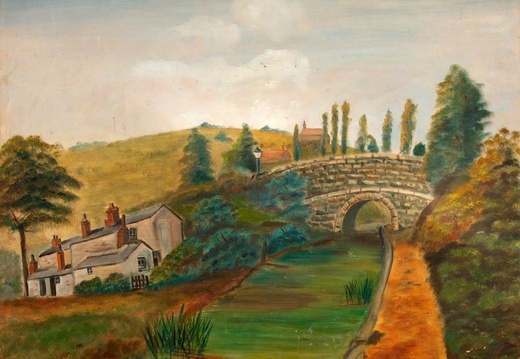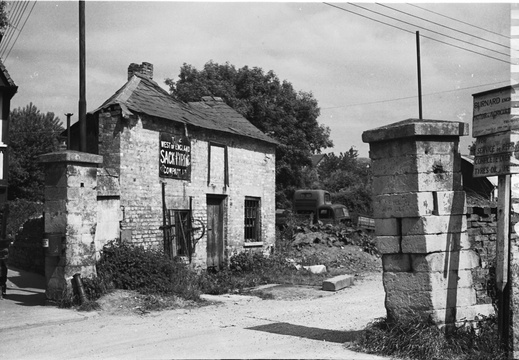
Podcasts
We chronicle the complex development and eventual decline of the Wilts & Berks Canal and its interconnected waterways. We detail the ambitious plans, engineering challenges, and financial hurdles faced during its construction, including the involvement of prominent engineers like Robert & William Whitworth.
Then highlight the intricate political landscape and fierce competition with other canal companies, particularly concerning coal trade and water rights, which often led to disputes and altered designs.
We finish on the struggle to remain viable in the face of railway expansion, leading to its eventual abandonment and the subsequent efforts to repurpose its infrastructure. 17 minutes
Economic impact on Swindon
We start with the history and decline of the Wilts and Berks Canal, focusing on its construction, trade, and eventual abandonment.
Then outline the origins and development of canals in Southern England, particularly those in the Wiltshire area like the Stroudwater, Thames and Severn, and the Kennet and Avon Canals, setting the stage for the Wilts and Berks Canal.
We closely examine the Wilts and Berks Canal's operations, its economic impact on Swindon, and the various goods it transported, contrasting trade patterns
Finally, we explore the challenges posed by railway competition, the canal's gradual decay, and the protracted process of its abandonment, including financial dealings, attempts at revival, and the ultimate passing of the 1914 Act that sealed its fate. 19 minutes
Wheeler Report
We review William Wheeler's report from October 1900, which includes a comprehensive assessment of the Wilts and Berks Canal.
This report was prepared for landowners, examines the canal's current condition, its historical background, and the potential benefits or drawbacks of its restoration or abandonment. It meticulously details the canal's physical state, including the widespread deterioration of locks, the presence of stagnant, weed-choked waterways, and the poor condition of many bridges.
Furthermore, the report analyzes the canal's diminishing traffic and revenue, highlighting the competition from the Great Western Railway and the limited prospects for future trade.
Finally, it outlines the estimated costs for repair and maintenance if the canal were to be made navigable again, alongside considerations regarding the sale of water rights and potential liabilities upon abandonment. 15 minutes Priestley Overview
We examine a historical account of the Wilts & Berks Canal, authored by the first Superintendent Joseph Priestley in 1831, offering a comprehensive overview of its development and operational details.
It outlines the canal's route, detailing its connections to other waterways like the River Thames and the Kennet and Avon Canal, along with various branches and their lengths.
The account also highlights the legislative history through six Acts of Parliament between 1795 and 1821, detailing the financial structures, authorized capital, and tonnage rates for different goods.
Furthermore, Priestley explains the incorporation of the North Wilts Canal into the Wilts & Berks Canal in 1821, and underscores the canal's economic significance in facilitating trade and transportation of goods like coal, agricultural products, and building materials. 13 minutes A Thousand Navvies
We overview the "Big Dig 1991", a significant canal restoration event near Wantage.
Detailing the planning, execution, and outcomes of this large-scale volunteer effort.
Highlighting the ambitious goal of attracting 1000 "navvies" (volunteer canal workers), the logistical challenges of accommodating and feeding such a large group, and the practical achievements of clearing a two-mile section of the Wilts & Berks Canal.
Additionally, we discuss the event's impact on public relations, relationships with local authorities and landowners, and the overall spirit of camaraderie and dedication among the volunteers.13 minutes
Royal Commission on Canals & Waterways
We examine the "Royal Commission on Canals & Waterways Evidence 1906" minutes from parliamentary proceedings, focusing on the state of various canals in England, specifically the Wilts and Berks Canal.
Through the testimony of civil engineers and agricultural experts, the document examines the current condition, financial viability, and potential for improvement of these waterways.
Witnesses discuss the impact of railway competition, the necessity of modernization and dredging, and the complexities of ownership and funding, debating whether canals, the derelict Wilts and Berks, could be revitalized for agricultural and commercial traffic or if they should be abandoned due to their unsanitary state and lack of profitability. 22 minutes Crowdy Letters
These excerpts from the James Crowdy's (Solicitor/ Principle Clerk) Letter Book illuminate the intricate planning and challenging execution involved in constructing the Wilts and Berks Canal.
The letters, penned by engineers and company officials, detail the initial surveys, estimates for water supply and construction costs, and the ongoing struggles with difficult terrain, unforeseen expenses, and contractor fraud.
A significant portion of the correspondence highlights the interdependence with the Kennet and Avon Canal and the Somersetshire Coal Canal, revealing disputes over shared responsibilities, toll charges, and the crucial need for an effective lock system to facilitate coal trade and broader navigation to major cities like London and Bristol.
The letters also touch upon legal interpretations of company acts, the financial state of the Wilts and Berks Canal Company, and the ultimate aim of delivering a profitable and publicly beneficial navigable route. 18 minutes


